

|
|
|


|
|
1/10 Scale Electric Buggy:
Kyosho Volkswagen Baja Bug - 2413
|
Released by Kyosho circa 1981, the 2WD Volkswagen Baja Bug - # 2413, designed by Mr. Tadashi Kurihara, is based on a molded nylon bathtub chassis, roll bar and front bumper, with a strap on cover and a rear mounted cast alloy two part overhanging gearbox, containing a standard silver can Mabuchi 540 electric motor and plastic gear direct drive system (no differential). A centrifugal clutch was also installed for smooth acceleration. The front suspension is spring loaded cast alloy trailing arm with no discernable rear suspension.
The kit also came with a servo operated mechanical speed controller and 3-piece wheels with spiked pneumatic sand tires.
There were three models based on the same chassis design, the Sand Skipper, Toyota Hilux and Volkswagen Baja Bug, all now considered rare and highly collectable.
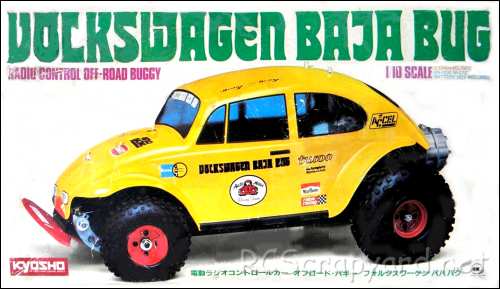
To get the best from the Kyosho Volkswagen Baja Bug, it needs to be fine tuned, to provide precise steering response and improve grip when cornering, so you don't slide off the track. Small changes can make huge advancements and our easy to understand guide will help you to the optimum Set-up for your individual driving style.








|
|
|

★ Kyosho Off-Road Buggys ★ 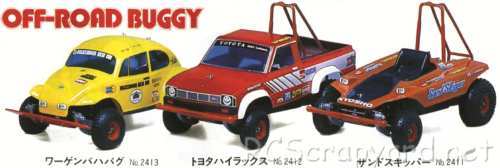
★ Kyosho Volkswagen Baja Bug Chassis ★ 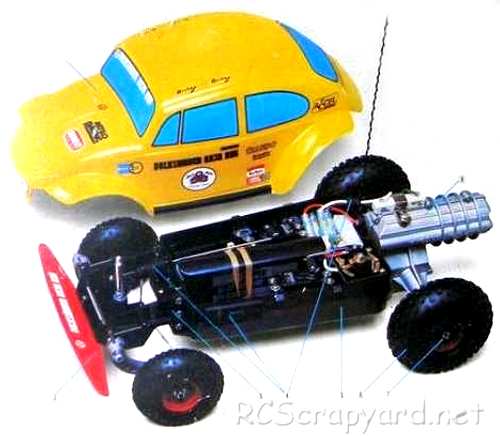
★ Kyosho Volkswagen Baja Bug Chassis ★ 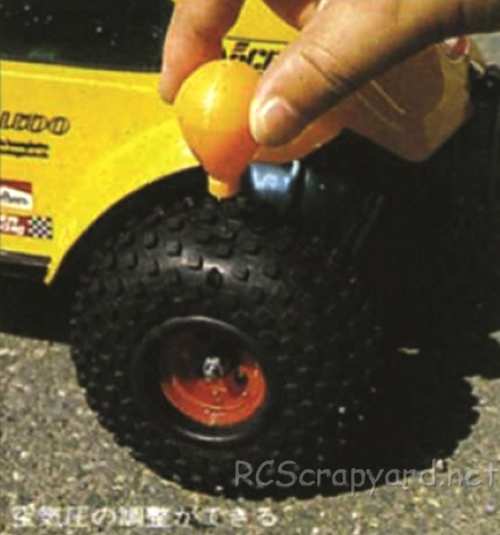
★ Kyosho Volkswagen Baja Bug Chassis ★ 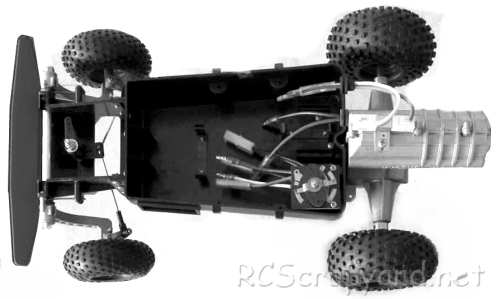
★ Kyosho Volkswagen Baja Bug Chassis ★ 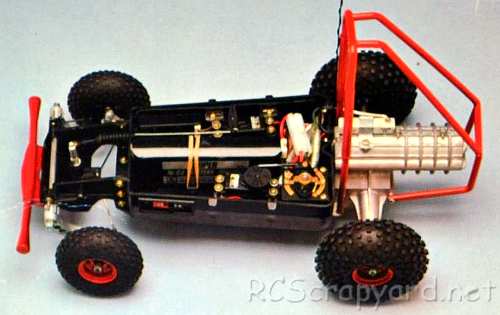
★ Kyosho Volkswagen Baja Bug Chassis ★ 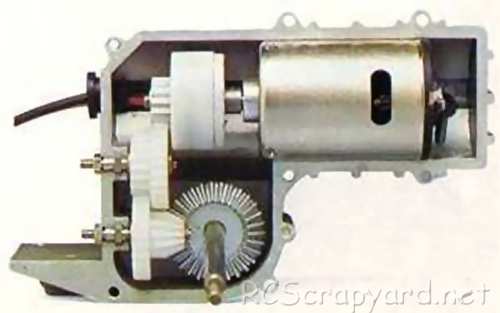
★ Kyosho Volkswagen Baja Bug Chassis ★ 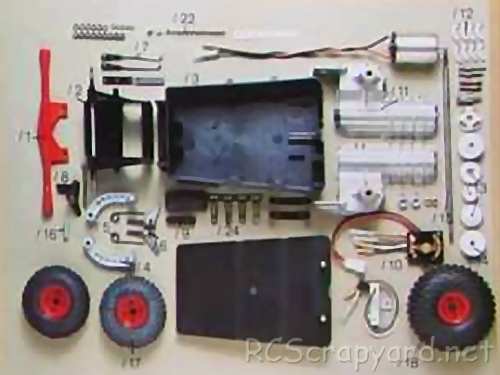
|
Buying a Used Kyosho Volkswagen Baja Bug
|
|
Manufacturers and Brands Catalogued, Listed and Reviewed by RC-Scrapyard.
At present, the RC Model Manufacturers, Brands and Distributors covered by us are: ABC Hobby, Academy, Acme Racing, Agama Racing, Amewi, Ansmann Racing, ARRMA, Team Associated, Atomic RC, Axial, AYK, Bolink, BSD Racing, Capricorn, Carisma, Carson, Caster Racing, Cen, Corally, Custom Works, Durango, Duratrax, ECX - Electrix, Exceed RC, FG Modellsport, FS-Racing, FTX, Fujimi, Gmade, GS-Racing, Harm, HBX, Helion, Heng Long, Himoto Racing, Hirobo, Hitari, Hobao, Hong-Nor, Hot Bodies, HPI, HSP, Intech, Integy, Jamara, JQ Products, Kawada, Kyosho, Losi, LRP, Maisto, Mardave, Marui, Maverick, MCD Racing, Megatech, Mugen, New Bright, Nichimo, Nikko, Nkok, Ofna, Pro-Pulse, Protech, PTI, RC4WD, Redcat Racing, RJ-Speed, Robitronic, Schumacher, Seben, Serpent, Smartech, Sportwerks, Step-Up, Tamiya, Team-C Racing, Team Magic, Thunder Tiger, Tomy, Top Racing, Traxxas, Trinity, Tyco, Vaterra RC, Venom, VRX Racing, WLToys, X-Factory, Xmods, Xpress, Xray, XTM, Yankee RC, Yokomo, ZD Racing and Zipzaps. |
|
Hints, Tips and Information How to Charge Rechargeable Batteries for Peak PerformanceNi-Cad (Nickel Cadmium) Batteries
1/ All Ni-Cad Batteries have to be Discharged soon after use. This is to avoid the dreaded "Memory" effect that on subsequent re-charges can cause a momentary drop in performance during a race. A simple discharger can be made from a car 12v bulb.
Ni-Mh (Nickel Metal Hydride) Batteries
1/ Never charge Ni-Mh batteries at a current higher than 4.5 amps. Although these batteries can give a higher voltage than Ni-Cad Batteries, they are much more sensitive and easy to damage if charged too quickly. |
|
Hints, Tips and Information
Soldering Battery Packs
Nicad and Nimh batteries sometimes come as six separate matched 1.2 volt cells. These of course have to be soldered to each other in series to produce either a side by side stick pack, or a two times three cell saddle pack.
|
|
RC Models:
|
Radio & Motors: |
Other
Accessories: |